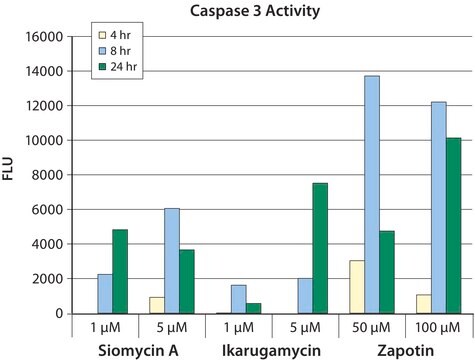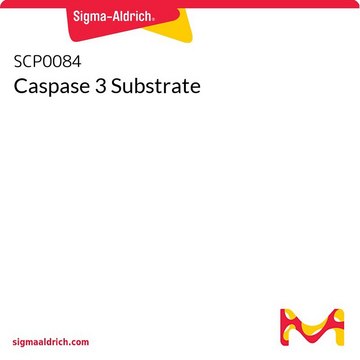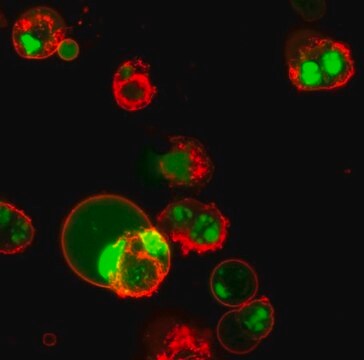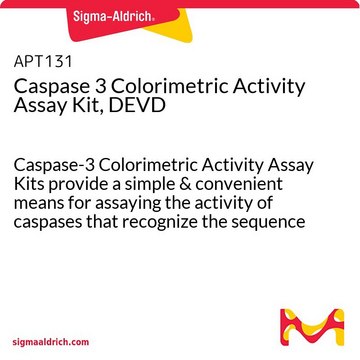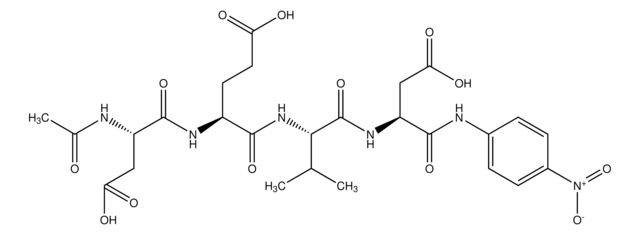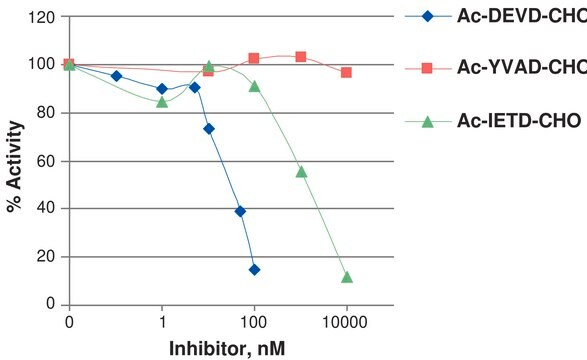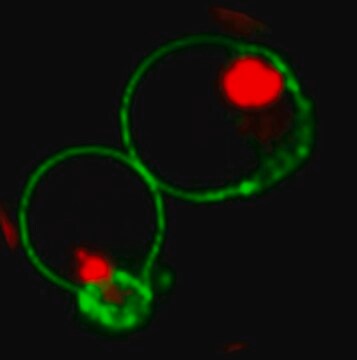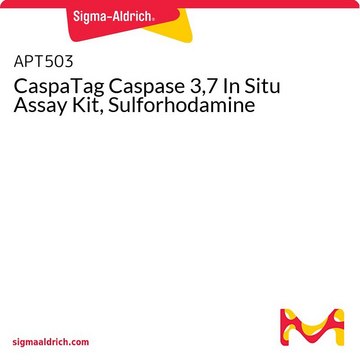CASP3C
Caspase 3 Assay Kit, Colorimetric
Sinónimos:
Colorimetric Caspase-3 Activity Assay Kit
About This Item
Productos recomendados
uso
sufficient for 1,000 multiwell tests (in 96-well multiwell plates)
sufficient for 100 standard tests (1 ml)
Nivel de calidad
Condiciones de envío
dry ice
temp. de almacenamiento
−20°C
Información sobre el gen
human ... CASP3(836)
Categorías relacionadas
Descripción general
The Caspase 3 Colorimetric Assay Kit is based on the hydrolysis of acetyl-Asp-Glu-Val-Asp p-nitroanilide (Ac-DEVD-pNA) by caspase 3, resulting in the release of the p-nitroaniline (pNA) moiety. p-Nitroaniline is detected at 405 nm (εmM=10.5). The concentration of the pNA released from the substrate is calculated from either the absorbance values at 405 nm or from a calibration curve prepared with pNA standards (pNA standard included with the kit).
Aplicación
Definición de unidad
Otras notas
Solo componentes del kit
- Water (17-18 megaOhm) 125 mL
Palabra de señalización
Danger
Frases de peligro
Consejos de prudencia
Clasificaciones de peligro
Acute Tox. 3 Dermal - Acute Tox. 3 Inhalation - Acute Tox. 3 Oral - Aquatic Chronic 3 - STOT RE 2
Código de clase de almacenamiento
6.1C - Combustible acute toxic Cat.3 / toxic compounds or compounds which causing chronic effects
Punto de inflamabilidad (°F)
415.4 °F - closed cup
Punto de inflamabilidad (°C)
213 °C - closed cup
Elija entre una de las versiones más recientes:
¿Ya tiene este producto?
Encuentre la documentación para los productos que ha comprado recientemente en la Biblioteca de documentos.
Los clientes también vieron
Artículos
Cellular apoptosis assays to detect programmed cell death using Annexin V, Caspase and TUNEL DNA fragmentation assays.
Nuestro equipo de científicos tiene experiencia en todas las áreas de investigación: Ciencias de la vida, Ciencia de los materiales, Síntesis química, Cromatografía, Analítica y muchas otras.
Póngase en contacto con el Servicio técnico
